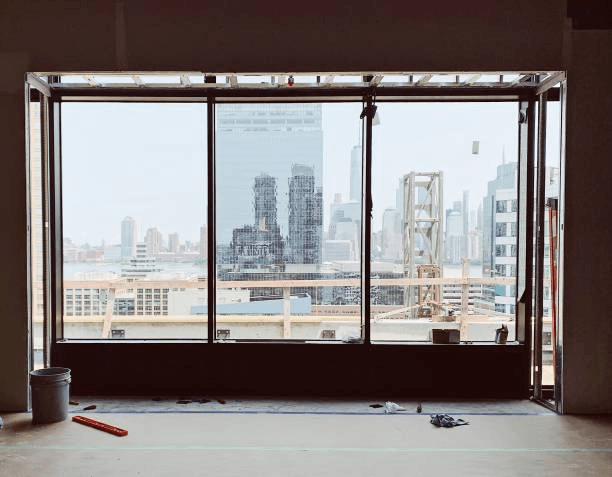The Rise of Office-to-Apartment Conversions in New York City

In recent years, New York City has witnessed a notable trend of office to apartment conversions, reflecting evolving urban dynamics and the demand for residential space in the city. This transformation is driven by various factors, including changes in work patterns, population growth, and the desire for more residential options in prime locations.
One significant catalyst for office to apartment conversions is the shifting landscape of the workplace. With the rise of remote work and flexible schedules, many companies have downsized their office footprints or adopted hybrid models, leading to vacancies in commercial office buildings across the city. Developers and property owners are seizing this opportunity to repurpose underutilized office space into residential units, capitalizing on the growing demand for housing in New York City.
The population of New York City continues to grow, driven by factors such as immigration, natural population increase, and urbanization trends. As the city's population expands, so does the need for housing, particularly in central locations with access to amenities, transportation, and employment opportunities. Office to apartment conversions present a strategic solution to meet this demand by converting surplus office space into much-needed residential units.
The COVID-19 pandemic has accelerated the transformation of office buildings into residential properties in New York City. The shift to remote work and the economic impact of the pandemic have led to increased vacancies in office buildings as businesses reassess their real estate needs. As a result, developers are reimagining these vacant office spaces as residential dwellings, adapting to changing market conditions and consumer preferences.
There are numerous benefits for both developers and residents. For developers, repurposing existing office buildings into residential properties can be a cost-effective alternative to new construction, as it often involves fewer regulatory hurdles and infrastructure requirements. It also allows developers to capitalize on existing assets and unlock the value of underperforming properties in prime locations.
From the perspective of residents, office to apartment conversions provide access to unique living spaces in well-established neighborhoods with vibrant amenities and cultural attractions. These conversions often result in loft-style apartments with open layouts, high ceilings, and industrial-chic aesthetics, appealing to urban dwellers seeking modern and eclectic living environments.
Certainly, here are some examples of office to apartment conversions that have taken place in New York City, along with the names of the resulting apartment buildings:
- The Woolworth Building Residences: Originally constructed as an office skyscraper in 1913, the iconic Woolworth Building underwent a transformation into luxury condominiums in the early 21st century. Located in Lower Manhattan, the building now houses high-end residential units with panoramic views of the city skyline.
- One Hanson Place (formerly Williamsburgh Savings Bank Tower): Situated in Brooklyn's Fort Greene neighborhood, One Hanson Place was once home to the Williamsburgh Savings Bank Tower, a prominent office building completed in 1929. Following a conversion project, the landmark skyscraper now features luxury condominiums and rental apartments, blending historic charm with modern amenities.
- 75 Wall Street: This historic office building in the Financial District underwent a conversion into a mixed-use development, including luxury residential units and a boutique hotel. Renamed as The Andaz Wall Street, the property offers upscale apartments with sleek design and convenient access to Lower Manhattan's amenities and transportation hubs.
- 70 Pine Street: Originally built as the headquarters of the Cities Service Company in 1932, 70 Pine Street underwent a comprehensive renovation and conversion into a mixed-use development. The building now houses luxury rental apartments, a boutique hotel, retail space, and dining options, offering residents a blend of historic architecture and modern living.
- The Corinthian: Located in Murray Hill, The Corinthian was once a commercial office building before being converted into luxury condominiums in the 1980s. With its distinctive cylindrical design and waterfront location, the building offers residents spacious apartments, resort-style amenities, and breathtaking views of the East River and Manhattan skyline.
These examples illustrate how former office buildings in New York City have been successfully repurposed and transformed into residential properties, catering to the growing demand for housing in the city while preserving architectural heritage and revitalizing neighborhoods.
Office to apartment conversions contribute to the revitalization of neighborhoods and the diversification of housing options in New York City. By repurposing vacant or underutilized office buildings, developers can breathe new life into communities, attracting residents and fostering economic growth. These conversions also help address the city's housing affordability challenges by increasing the supply of housing units, albeit in a higher-end segment of the market.
Conversions are not without challenges and considerations. Developers must navigate zoning regulations, building codes, and permit requirements to ensure compliance with city regulations and safety standards. Additionally, the conversion process may entail significant renovation and retrofitting efforts to adapt office spaces for residential use, which can be complex and costly.
There are concerns about the loss of commercial office space and its potential impact on the local economy and employment landscape. As more office buildings are converted into residential properties, there is a risk of reducing the availability of office space for businesses, potentially leading to higher rents and limited options for companies seeking commercial real estate in New York City.
In response to these challenges, city planners, policymakers, and community stakeholders are actively engaging in discussions about the future of office to apartment conversions in New York City. Strategies such as incentivizing mixed-use developments, preserving designated office districts, and promoting affordable housing initiatives are being explored to balance the competing interests of developers, residents, and businesses.
Overall, office to apartment conversions represent a dynamic and transformative trend shaping the urban fabric of New York City. As the city continues to evolve and adapt to changing demographic, economic, and social dynamics, these conversions serve as a reflection of the city's resilience, innovation, and capacity for reinvention in the ever-changing urban landscape.




